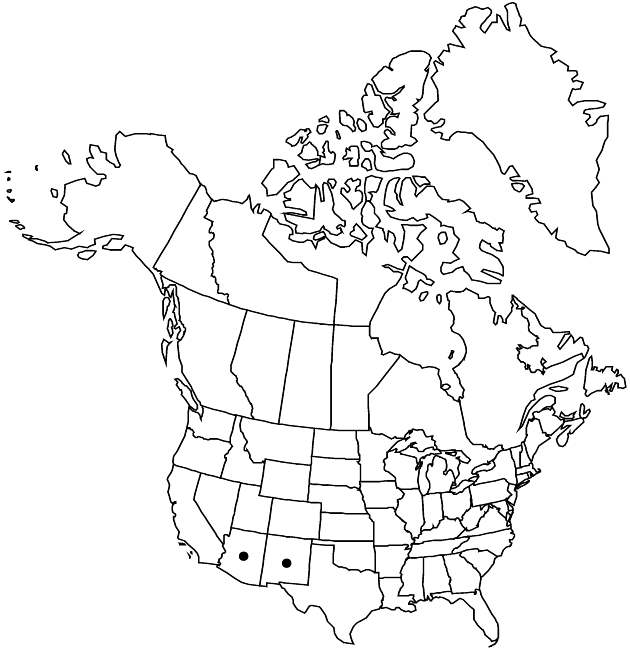Difference between revisions of "Isocoma azteca"
Phytologia 70: 84. 1991.
imported>Volume Importer |
imported>Volume Importer |
||
| Line 47: | Line 47: | ||
|publication year=1991 | |publication year=1991 | ||
|special status= | |special status= | ||
| − | |source xml=https:// | + | |source xml=https://bitbucket.org/aafc-mbb/fna-data-curation/src/2e0870ddd59836b60bcf96646a41e87ea5a5943a/coarse_grained_fna_xml/V19-20-21/V20_1018.xml |
|tribe=Asteraceae tribe Astereae | |tribe=Asteraceae tribe Astereae | ||
|genus=Isocoma | |genus=Isocoma | ||
Latest revision as of 19:58, 5 November 2020
Herbage glabrous, sometimes sparsely stipitate-glandular, not resinous. Leaf blades narrowly oblong to narrowly oblanceolate, 20–50 mm, margins shallowly to deeply pinnatifid (lobes in 3–8 evenly arranged pairs, apically aristate). Involucres 7–8 × 5–7.5 mm. Phyllary apices green to greenish yellow, not aristate, sparsely to prominently gland-dotted, without resin pockets. Florets 18–25; corollas 5–6 mm. Cypsela ribs not forming apical hornlike extensions.
Phenology: Flowering Jul–Sep.
Habitat: Slopes, river edges, sandy to clay soils, gypseous or saline, badlands in pinyon-juniper woodlands, commonly with Atriplex
Elevation: 1500–1800 m
Discussion
Isocoma azteca is similar to I. rusbyi in most features and perhaps most closely related to it; the pinnate leaves of I. azteca are distinctive. The two taxa are essentially contiguous in range along the New Mexico-Arizona border and their interaction in natural populations needs to be studied.
Selected References
None.
